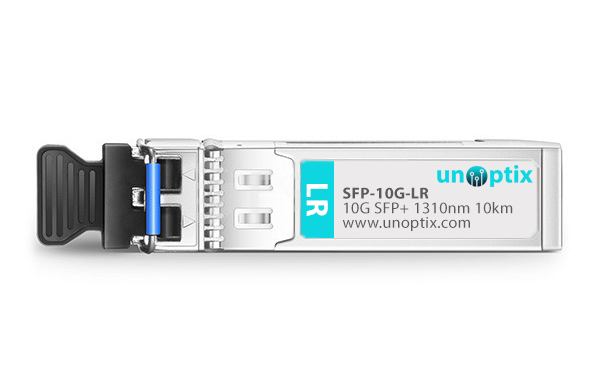
Oct 03 , 2023
SFP Compatibility Guide and How to Use a Compatible SFP Module?
With the advancements in fiber optic technology, there's been a surge in the use of compatible SFP transceiver modules in data centers. Yet, concerns regarding the compatibility and interoperability of these modules persist. This article provides a deep dive into SFP compatibility and guides on its verification.
Understanding SFP Compatibility
To fully grasp SFP compatibility, it's essential to familiarize oneself with the multi-source agreement (MSA). MSA is a consensus among multiple transceiver producers to design standardized products. While not regulated by formal standards, SFPs are outlined by the MSA, ensuring the compatibility of modules, including aspects like size, connectors, and signaling. Similarly, MSA standards are in place for other optic transceivers, such as SFP+, XFP, QSFP, and more. Typically, SFP transceivers that adhere to the MSA standards are universally compatible across various telecoms hardware, allowing users to integrate components from multiple suppliers. A successful connection and operation between cables, switches, and devices is a testament to the qualified compatibility of an SFP.
The Need for Compatible SFP
Prominent manufacturers often claim that only their branded SFP modules can function with their equipment. While using branded modules is commendable, they often come with a hefty price tag. For many consumers, cost efficiency remains a top consideration. Using branded modules invariably means incurring higher expenses. Additionally, not all vendors are transparent about the compatibility of their device's SFP slots with other vendors' standard SFPs. This lack of clarity can be problematic when devices from one vendor don't communicate with the SFP modules from another. Compatible SFPs, provided they align with MSA standards, serve the same function as official hardware and are universally compatible. Thus, choosing Unoptix compatible SFPs not only guarantees savings but also ensures compatibility across various vendors.
Guidelines for Using a Compatible SFP Module
At times, a compatible SFP transceiver may face operational issues in branded switches. Usually, the issue isn't the faulty SFP, but improper handling. Below are some guidelines to ensure the correct use of a compatible SFP module:
- Inspect your transceiver module and device port: Mistaking one transceiver module for another is common due to their resemblance. For instance, while SFP supports 1Gbps data, SFP+ can handle up to 10 Gbps. Ensure you're using the appropriate module for the correct port.
- Match the wavelength: SFP modules at both ends must have a consistent wavelength to facilitate data transmission. Always check the specifications.
- Select the appropriate fiber type: It's crucial for ensuring SFP compatibility. Always verify that fibers on both SFP module ends are of the same type.
- Ensure port compatibility: Ensure that your device's ports are receptive to the SFP modules in use. Even when using universally compatible modules like those from Unoptix, it's prudent to verify port standards.
- In-house coding and testing: Always ensure that modules undergo rigorous coding and testing procedures to ensure maximum compatibility and performance.
A Closer Look at Unoptix's SFP-10G-LR Module
To illustrate the importance of compatibility and quality in SFP transceivers, let's explore one of Unoptix's exemplary products: the SFP-10G-LR.

Unoptix's SFP-10G-LR is not just any module; it's a testament to industry standards and versatility. As a generic MSA-compliant transceiver, it embodies the meticulousness needed for universal device compatibility. Its design and functionality closely adhere to the main elements defined in the SFP/SFP+ MSA:
Physical Dimensions: This module maintains the MSA-prescribed dimensions, with a height, width, and depth of 8.5mm, 13.4mm, and 56.5mm, respectively.
Electrical and Mechanical Design: From the edge connector to the host PCB-mounted electrical connector mating, host board layout, and even the cage assembly dimensions, this transceiver is a perfect example of precision engineering.
Electrical Interface: The pin definitions, timing requirements, and the module definition interface are all in sync with MSA standards.
With the increasing demand for advanced monitoring capabilities, the Digital Diagnostics Monitoring (DDM) feature is a significant addition in many contemporary transceivers. The SFP-10G-LR is aligned with the MSA specification for SFF-8472, ensuring it offers the DDM feature, an extension of both the GBIC standard and the MSA SFP.
For those with specific needs, customization options are available in the dropdown list. Each Unoptix transceiver undergoes rigorous testing in our advanced test center before shipping. This ensures 100% functionality and guaranteed compatibility for superior network performance. Our facility boasts a wide variety of original brand network equipment, ensuring that our transceivers meet or even exceed the industry standards. Plus, with our expert team on hand, we guide our customers towards optimal network design solutions.
Unoptix is committed not only to performance but also to sustainability. All our optical transceivers are compliant with the RoHS Directive 2011/65/EU, furthering our promise of quality and environmental responsibility.
SFP compatibility remains pivotal when choosing network devices. Unoptix, as a reputable and professional vendor, guarantees SFP compatibility and optimal performance. We offer SFP transceivers compatible with most major brands. For all your requirements, consider exploring Unoptix's diverse offerings.
